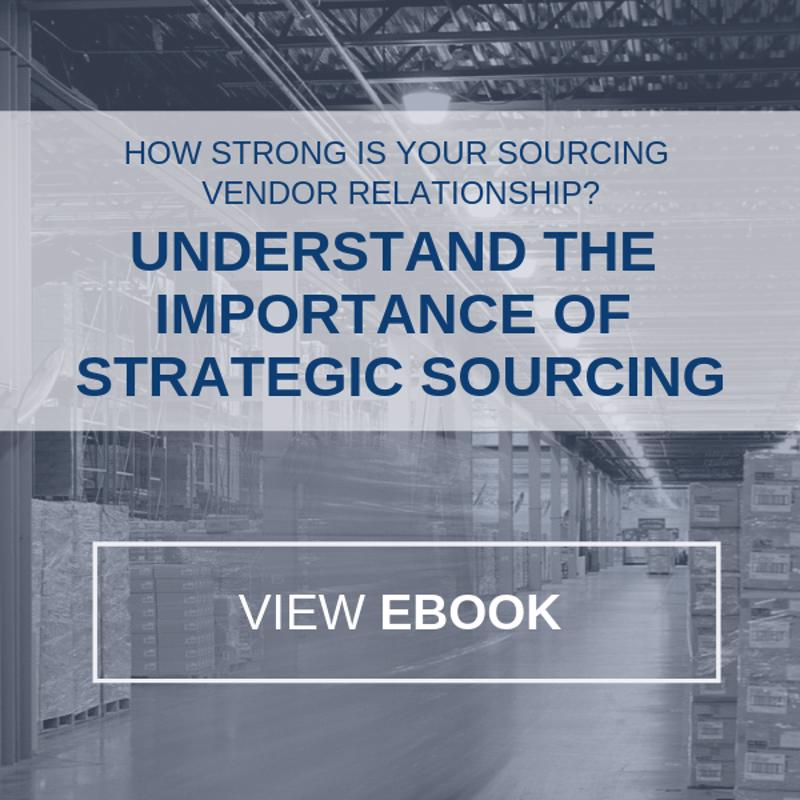-
Subscribe to Blog:
SEARCH THE BLOG
CATEGORIES
- Aerospace
- Asset Maintenance
- Automotive
- Blog
- Building Products
- Case Studies
- Chemical Processing
- Consulting
- Food & Beverage
- Forestry Products
- Hospitals & Healthcare
- Knowledge Transfer
- Lean Manufacturing
- Life Sciences
- Logistics
- Manufacturing
- Material Utilization
- Metals
- Mining
- News
- Office Politics
- Oil & Gas
- Plastics
- Private Equity
- Process Improvement
- Project Management
- Spend Management
- Supply Chain
- Uncategorized
- Utilities
- Whitepapers
BLOG ARCHIVES
- July 2025 (1)
- June 2025 (4)
- May 2025 (1)
- April 2025 (1)
- March 2025 (1)
- February 2025 (4)
- January 2025 (4)
- December 2024 (4)
- November 2024 (2)
- October 2024 (6)
- September 2024 (5)
- August 2024 (5)
- July 2024 (6)
- June 2024 (3)
- May 2024 (3)
- April 2024 (4)
- March 2024 (3)
- February 2024 (4)
- January 2024 (5)
- December 2023 (2)
- November 2023 (1)
- October 2023 (6)
- September 2023 (3)
- August 2023 (4)
- July 2023 (2)
- June 2023 (3)
- May 2023 (7)
- April 2023 (3)
- March 2023 (3)
- February 2023 (5)
- January 2023 (6)
- December 2022 (2)
- November 2022 (5)
- October 2022 (5)
- September 2022 (5)
- August 2022 (6)
- July 2022 (3)
- June 2022 (4)
- May 2022 (5)
- April 2022 (3)
- March 2022 (5)
- February 2022 (4)
- January 2022 (7)
- December 2021 (3)
- November 2021 (5)
- October 2021 (3)
- September 2021 (2)
- August 2021 (6)
- July 2021 (2)
- June 2021 (10)
- May 2021 (4)
- April 2021 (5)
- March 2021 (5)
- February 2021 (3)
- January 2021 (4)
- December 2020 (3)
- November 2020 (3)
- October 2020 (3)
- September 2020 (3)
- August 2020 (4)
- July 2020 (3)
- June 2020 (5)
- May 2020 (3)
- April 2020 (3)
- March 2020 (4)
- February 2020 (4)
- January 2020 (4)
- December 2019 (3)
- November 2019 (2)
- October 2019 (4)
- September 2019 (2)
- August 2019 (4)
- July 2019 (3)
- June 2019 (4)
- May 2019 (2)
- April 2019 (4)
- March 2019 (4)
- February 2019 (5)
- January 2019 (5)
- December 2018 (2)
- November 2018 (2)
- October 2018 (5)
- September 2018 (4)
- August 2018 (3)
- July 2018 (2)
- June 2018 (4)
- May 2018 (3)
- April 2018 (3)
- March 2018 (2)
- February 2018 (2)
- January 2018 (1)
- December 2017 (1)
- November 2017 (2)
- October 2017 (2)
- September 2017 (1)
- August 2017 (2)
- July 2017 (2)
- June 2017 (1)
- April 2017 (3)
- March 2017 (3)
- February 2017 (2)
- January 2017 (2)
- December 2016 (2)
- November 2016 (4)
- October 2016 (4)
- September 2016 (3)
- August 2016 (6)
- July 2016 (4)
- June 2016 (4)
- May 2016 (1)
- April 2016 (3)
- March 2016 (4)
- February 2016 (2)
- January 2016 (4)
- December 2015 (3)
- November 2015 (3)
- October 2015 (1)
- September 2015 (1)
- August 2015 (4)
- July 2015 (6)
- June 2015 (4)
- May 2015 (7)
- April 2015 (6)
- March 2015 (6)
- February 2015 (4)
- January 2015 (3)
CONNECT WITH US
Tag Archives: Infrastructure
They happen every year in California and throughout much of the Pacific Northwest: wildfires. According to the Interagency Fire Center, 8.2 million acres burned in 2018 in the U.S. overall. In the Golden State so far in 2019, land scorched nears 8,000 acres.
But wildfire season is slightly different this time around, in addition to displacing thousands of residents and businesses, the effects have also led to widespread power outages. Some of these have been scheduled by the state’s largest utility provider, Pacific Gas & Electric Corp., in order to ensure the safety of firefighters and emergency personnel battling the blazes.
However, patience has ceased to become a virtue for many of the state’s residents impacted, and the length of the outages is peeling back the curtain on what many people view as one of the country’s most pressing problems as it relates to infrastructure: the aging electrical grid. Because the vast majority of small-business owners and major corporations require power to provide, manufacture, or deliver products and services, the grid’s failings are forcing companies to evaluate their current processes and develop workarounds so service interruptions are minimized.
As veteran business owners can attest, it’s not if they’ll be affected by outages, but when and for how long.
Are blackouts happening more frequently?
If it seems like outages are occurring with greater regularity, it’s not your imagination. In 2017, the most recent year in which complete data is available, outages totaled 3,526 nationally, according to estimates from Eaton. These affected close to 37 million people — many of them business owners — and lasted close to an hour and a half per outage. They also occurred in all 50 states.
“For the ninth consecutive year, California experienced the highest number of power failures.”
For the ninth consecutive year, California experienced the highest number of power failures. And between 2008 and 2017, the total was close to 4,300, more than doubling the amount in Texas, which saw the second highest number at 1,603, Eaton reported. Furthermore, how much time passed before the lights came back on in the Golden State was considerably longer than the national average at 133 minutes.
Of course, outages are hardly isolated to the nation’s most-populated state. Several other states experience a greater number of them and for lengthier time periods than in years’ gone by. These included Alaska (138 minutes), the state with the lowest population density, Arizona (138 minutes), Wyoming (153 minutes), Vermont (172 minutes), and Montana (212 minutes).
Why are they occurring on a more regular basis?
Because so many variables play into the power supply and its reliability (e.g. weather-related events, source of electricity, car accidents that damage utility poles, etc.), it’s difficult to isolate their frequency to one issue. In general, however, the uptick is largely due to a lack of investment in fixing the grid as it presently exists and the growth in the country’s population. In other words, more properties are tapping into an already tapped out energy infrastructure.
As chronicled by the American Society of Civil Engineers, the U.S. at present has approximately 640,000 miles worth of high-voltage transmission lines. Most of these distribution lines were installed in the 1950s and 1960s. At that time, they weren’t expected to last more than 50 years. With it now being 2019, do the math. What’s more, in the contiguous U.S., power grids are operating at full capacity.
In short, wear and tear, accompanied by utility lines being stretched thin, has taken a toll.
“The government lacks an adequate federal energy policy.”
Additionally, investments in shoring up the grid have been insufficient. Some lines are owned by the federal government, which the ASCE notes lacks an adequate federal energy policy, while others are managed by investor-owned utilities. Specifically, they’re responsible for only 6% of electrical providers, yet serve close to 70% of customers.
Add in the surge in wildfire activity as well as other weather-related catastrophes — 17 of the last 25 Atlantic hurricane seasons have been above average in terms of activity, according to the National Oceanic Atmospheric Administration — something’s got to give. That something is the electricity.
These are among the reasons why major utility providers such as PG&E don’t expect blackouts to diminish anytime soon. At an October meeting held by the California Public Utilities Commission, PG&E CEO Bill Johnson noted it could be 10 years or more before they’re “really ratcheted down significantly,” NPR reported.
Although many households in California are still in the dark a month removed from the shutoff events, at least 2 million Californians were without power when the outages peaked in October.
What is the solution?
While there are many potential answers to the power problem, something everyone agrees on is there’s no quick fix. Some communities and municipalities, such as those in Wyoming, have decided to bury electrical lines so they’re underground, thus avoiding impact-related events that cause outages. This may help explain why Wyoming has averaged the fewest power outages between 2008 and 2017 (only 94). However, the problem with these is cost: three times more than traditional overhead, as noted by the Casper Star Tribune.
ASCE has a few suggestions, noting that any meaningful action must start at the top:
- Federal government must comprehensively assess where grid requires reinforcements and strategically invest in alternative energy sources such as biomass, hydroelectric, geothermal, and solar.
- Utilize remote sensing and inspection technologies to improve maintenance and real-time detection.
- Rebuild distribution lines so they’re more resistant to seasonal forces (wind, heavy snow, ice, etc.).
- Make it easier for utility providers to obtain permits they need to begin construction.
- Enact a national “storm hardening” plan that is guided by the recommendations of electrical engineers.
Restoring the nation’s power grid — as well as your own — will cost money, but doing nothing about it may cost more if outages continue to proliferate as expected. From 2003 to 2012, outages resulted in losses that averaged between $18 billion and $33 billion for the U.S. economy when adjusted for inflation, according to ASCE’s calculations. Even one lengthy outage can be devastating on productivity, never mind several.
At USC Consulting Group, we can power your processes so you can keep your business up and running so the lights don’t go out. We do this by analyzing how your company functions at present, set up asset maintenance best practices, and offer step-by-step solutions for where to fill gaps. The productivity improvements and supply chain optimization we recommend can help you work proactively so you’re always expecting the unexpected. Please contact us today.
Transportation and logistics organizations quite literally propel the modern marketplace, underpinning product and service delivery workflows worldwide. Unfortunately, the businesses that populate this key industry have come up against numerous challenges, including a number of environmental obstacles that impede the progress of the shippers and truckers navigating waterways and highways everywhere. Here are some of those roadblocks and ways that transportation and logistics firms might address them over the coming months and years:
Extreme weather patterns
In late 2018, the container ships navigating the Rhine River, Europe’s busiest commercial waterway, encountered a unique problem: The storied tributary was remarkably desiccated and unable to support large shipping vessels, Bloomberg reported. A drought had brought water levels in the Rhine basin to historic lows, forcing carriers operating in Western Europe to find alternative routes – or cancel shipments altogether. Although the Rhine’s water levels returned to normal in December 2018, according to Reuters, this is just one of the many instances in which extreme weather has threatened transportation and logistics operations in recent years. These occurrences, which scientists link to climate change, pose a significant threat to transportation and logistics organizations. In fact, extreme weather events, natural disasters, and “failure of climate-change mitigation and adaption,” rank among the World Economic Forum’s top five biggest business risks in terms of likelihood and impact.
Transportation and logistics enterprises have no choice but to adjust to this environmental risk, but how? Leveraging forward logistics, proactive notification and direct-store delivery strategies are among the most often recommended courses of action, Inbound Logistics reported.
Crumbling infrastructure
Infrastructure is a significant issue for transportation and logistics businesses operating in the U.S., where an investment gap of more than $4.5 trillion exists, according to researchers from the American Society of Civil Engineers. This problem affects virtually all transportation channels. Many U.S. ports cannot effectively handle modern container ships, leading to long-term delays and other serious problems, the trade association found. American roads are in a similarly sorry state, and in need of $836 billion worth of improvements and repairs, per the ASCE. Domestic railroads are also in disarray, as operators struggle with outdated cars, tracks, and stations that cannot meet the demands of commercial shippers, according to the group.
Industry organizations associated with each of these modes have called on local, state, and federal governments to invest in transportation infrastructure. This includes the Association of American Railroads and the American Trucking Association, both of which support large-scale institutional spending strategies. Unfortunately, the trillions needed to improve the country’s ports, roads, and rails are unlikely to materialize. This means carriers must take matters into their own hands by building flexibility into their supply chains to compensate for any infrastructure-related shipping slowdowns.
Increased government regulation
New pieces of government regulation are weighing heavily on organizations in the transportation and logistics space, according to research from Capgemini published in Logistics Management. While firms in the sector generally understand that carefully crafted statutes carry some benefit, many are concerned that the expenses associated with compliance outweigh potential advantages. For instance, the Federal Motor Carrier Safety Administration’s Electronic Logging rule, which took effect in December 2017, generated significant upheaval in the trucking arena as drivers cut down their hauling times to meet strictly enforced ELD regulations, the Chicago Tribune reported. This resulted in higher shipping costs, which ultimately trickled down to the customer.
Many transportation and logistics organizations struggle to comply with rules like the ELD regulation while maintaining healthy profit margins. While lobbying to stop the passage of additional rules can make a difference, companies in the space would be better off adjusting their internal processes in a manner that streamlines compliance and therefore mitigates its functional and financial impact on the operation.
Taken together, these challenges may seem insurmountable to carriers just looking to survive. This is not the case. By making some of the operational improvements mentioned above and embarking on more robust optimization efforts, transportation and logistics businesses can strengthen their position in the marketplace and find sustainable success. Of course, making such changes alone can be hard. This is where USC Consulting Group comes into play. We can tap into decades of consulting experience to help transportation and logistics companies of all sizes bolster their operations to account for new sector-specific challenges.
Contact USCCG today to learn more about our work in the transportation and logistics industry.








